Behind the Barn Doors: Wildberry, a History
- Bridget Jones

- Jul 29
- 16 min read
Before Wildberry, a History of the Jones Farm
Long before Wildberry ever took root, this land was home to generations of farmers who raised their families here with deep devotion and quiet grit.
In the late 1920s, Matt’s great-grandfather, Edwin, auctioned off his farm in Michigan and moved his family to Maryland, purchasing what would become our family’s homestead.
Known in town as “The Egg Man,” Edwin built a life here raising laying hens, dairy cows, and produce. He was a true steward of the land, growing food not just for his family, but for the surrounding community. He even won awards for his eggs. Edwin and his wife Evelyn raised three children: Francis, Mart, and Macey.
(Photo on the left shows Edwin and Evelyn Jones on their property in the 1960s,
Photo on the right shows the poster advertising the auction in Michigan in 1927)
By the 1950s, the farm shifted its focus to tobacco. The land was divided: Mart worked the portion that is now Martin’s Grant Court and St. Stephen’s Woods, while Francis cultivated what we now call Wildberry. He farmed both sides of the road, from the corner of St. Stephen’s Church Road all the way down to his parents’ original home, which sat right in the middle. Francis and his wife Angelina (Angie) raised four children: Edwin (Ed), Frederick (Fred), Cynthia (Cindy), and Karl, passing on the same deep-rooted work ethic and love of the land.
(Images left to right: 1. Harvesting tobacco in 1966. Francis and Angie's house in the background- if you've been to a workshop or farm to table dinner at Wildberry, that is the same field. 2. Tobacco growing in what is now the market field, with the parking area behind it. 3. Francis, Angie and their four children posing for a photo in 1967)
By the 1980s, tobacco was phased out, and the family transitioned to growing produce and running small roadside stands. Eventually, each sibling moved into other careers: Ed became a carpenter and contractor, Karl worked as a mechanic for Metro, Cindy joined NASA, and Fred became a long-haul truck driver. For a while, the land was farmed by a neighbor who grew no-till mono crops like corn, soybeans, and wheat, using conventional practices that relied heavily on herbicides, pesticides, and synthetic fertilizer. That continued until 2019.

The soil, though quiet, remembered. And soon, something new would begin to sprout.
The Birth of Wildberry
In May of 2019, I stepped away from my job as a preschool assistant teacher. It was work I loved, but was growing too weary to sustain. Our youngest was heading to kindergarten, and I was beginning to feel the quiet tug of something else, something still unnamed.
At the same time, I was supporting Matt’s small marine restoration business, handling social media and bookkeeping in the margins of motherhood and teaching. Matt was in the midst of a merger with a larger marine company, one that promised more structure and admin support. A verbal agreement was made that I’d join the new company part-time to manage marketing, helping to offset Matt’s pay cut.
I poured myself into the role: managing six social media accounts, designing ads, coordinating with local publications... We were building something together, until we weren’t.
(Photos left to right: 1. Me posing with a preschool student whose brother I also taught. 2. The day I had the idea for Wildberry, I took this picture to remember it. 3. A photo of me and our kids at the Rennaisance Fest right before we started Wildberry)
Just as the school year started in 2019, I was called into what I thought was an onboarding meeting. Instead, I was blindsided... yelled at, accused of overspending (despite only running ads approved by the owner), and then told I wouldn’t be brought on at all. The paperwork had already been signed. My job was gone. Our backup plan had vanished. And I was left with two kids in school, a $30,000 income gap, and no roadmap forward.
So I asked the question that would change everything:
What would it look like to do something on the farm?
Year One: The Photography Chapter
Once we officially filed our LLC, the very first thing I tried was offering the farm as a photography location.
I was part of a local moms group at the time, and I posted something casual like, “Hey, we have a farm. We’ve had our own photo sessions here—family stuff, our wedding, our kids’ birthdays—and it’s beautiful land. I know some photographers like outdoor spaces. Would anyone be interested?”
The response was immediate. I ended up connecting with a photographer recommended by a friend (someone whose son I had actually taught), and we agreed on a simple setup. She wanted exclusivity, and we started with a very reasonable price, $40 a session. No contract, just a verbal understanding.
But things snowballed fast. She ended up photographing another photographer’s family, and that photographer reached out asking if she could book too. I felt torn. We had that verbal agreement, but I also knew I couldn’t give away our entire farm for $40 a pop. So I talked to the original photographer to try and navigate next steps respectfully and ultimately, we opened it up. Carefully.
That’s when I realized: photographers want golden hour. Exclusivity. Beautiful spaces.
So we leaned in. Matt and I started planting wildflowers, clearing new areas, hanging swings, and creating those “Instagrammable” moments. We truly loved it, Matt especially, turning the land into living art. He built swings and benches, carved out secret corners in the trees. I used my eye for beauty and started photographing the farm myself to show what made it so magical. It was fun. Creative. Personal.
(These photos were taken by Megan Evans Photography at Wildberry)
We set up a simple online booking system and started increasing the price. But the more we grew, the more we noticed a shift.
Photographers were running over their session times. By 15, 30, even 45 minutes. Guests were crossing property lines, letting their kids climb on our log splitter, playing on my mother-in-law’s swing set, or wandering dangerously close to electric fences near the horse pasture that borders the back of our property. People weren’t listening, or maybe they just weren’t being told the rules.
We tried everything: higher prices to discourage disrespect, boundary texts with 15-minute heads-up reminders, clearer signage, a booking package explaining boundaries... But the truth is, it started to drain us. Not just logistically, but emotionally. The respect for our land was fading.
The final straw was a mini session. I was vacuuming in my bedroom, looked out the window, and saw strangers in my front yard. Not near the field. Not down by the wildflowers. My front yard. It was like a punch to the gut.
We realized in that moment: we don’t want to open up our personal space to the public. We want to welcome people to Wildberry. But not like this.
Photography was our first chapter. It taught us a lot about boundaries, beauty, and what happens when you say yes to everything. It gave us our first taste of running a business from the land. And it helped us start to figure out what kind of space we actually wanted to build.
Chapter 3: The Market Was Born
After our photography chapter began to wind down, the world shut down.
We had started hosting photographers in 2019, and it continued through the fall, winter, and early spring. But then COVID hit. Everything stopped. The world got quiet. And so did Wildberry, for a moment.
By then, I had already been attending local networking events that weren't agriculture-focused, but creative ones. That’s always been my zone: creative entrepreneurs, dreamers, builders. And I was starting to realize we could build something beautiful here at the farm that blended both: creativity and land stewardship. Especially because, at the same time, the family farming legacy was shifting. Of the four brothers from a neighboring farm who had farmed here, three had passed away within the same year. We knew, deeply, that it was time to do something new. Something meaningful.
In the early days of the pandemic, we invited some of those creative friends over for what we jokingly called “happy hour”—outdoors, distant, masked up, hearts wide open. It felt good. And I remember thinking: what if we hosted a little market? Just once? Just for fun?
So in June of 2020, we did. There were maybe six or eight of us: a mobile bar, a baker who specialized in wedding cakes, a local honey maker (whose kids went to school with ours), a woodworker (whose son I had taught in preschool), Annie’s Flower Truck, and me, already selling produce and eggs from a little roadside stand on the farm. I invited everyone to come for free. We set up in the field, handed out goodie bags to the first 50 guests, and just… let it happen.
(Photos from the first "Market" day)
And people came.
Not in droves, at least not yet, but enough to feel like something was clicking. There was nothing else going on, after all. Families were looking for safe ways to gather. Creatives were looking for places to sell their goods. And we had space. We had a why.
So we kept going.
I added a tent. Our flower harvests grew. More and more makers and bakers and dreamers started to reach out. A lot were crafters born out of COVID, like a stylist-turned-seamstress who worked at our salon and had started making masks. Really good ones. Soft elastic, adjustable ear loops, cute prints. She made us custom Wildberry masks. My dad even bought some. That kind of ingenuity, that’s what I remember most about that season. People trying. Building. Creating. Pivoting.
(Top row photos left to right: 1. Selling flowers to a friend on May 21 2020.
2. I graduated from the wicker table to a borrowed folding table by May 28, 2020.
3. I hand-painted this sign and Matt had it up for me by June 11, 2020
Bottom row photos left to right: 1. I saved up enough to buy a tent by late Jun 2020.
2. A Happy Hour we hosted on June 25, 2020 with local creatives.
3. With friends at our first Christmas Market December 12, 2020.)
We said yes to a lot of those people. Makers of dog treats, handmade candles, herbal tinctures, jam, jewelry, soaps. Someone asked if they could bring their dog. We were like, sure. Why not? That was the vibe back then: “Sure. Why not?”
By the end of 2020, we had hosted our biggest event yet, maybe 20 or 30 vendors. We started charging $20 per space, just to help us keep things organized. We didn’t have a formal application. I kept everything in a word document on our computer. It was messy, but it was full of heart.
We started dreaming up community events too, like a trick-or-treat trail for kids who couldn’t go door to door, with scoops and gloves and weird little pandemic protocols. We hosted an outdoor movie night. We ended the year with our first-ever Christmas Market.
(Photos Left to right: 1. Matt would design and hand-build photo-ops for the markets, this was the photo op in December 2020, "Santa's Living Room".
2. Us at the 2020 Christmas Market under our tent.
3. The "Santa's Living Room" photo op started out as "The Sanderson Sister's Living Room" for our Halloween event in October of 2020, we hand-made and hand-built everything ourselves.)
It was magical. Raw and real and imperfect... but magical.
And through it all, we championed small businesses. We cheered for them. We watched people step into their purpose, try something new, test an idea. We made friends. Built connections. Held space for something beautiful to bloom during one of the hardest years the world had seen.
That was the beginning of the market era at Wildberry.
Chapter 4: Building Years
From 2021 through 2022, Wildberry was growing steadily. We were hosting markets, putting on seasonal events, leading workshops, and building a rhythm. From the outside, it probably looked like we had found our stride. But beneath it, there was always a current of overgiving, and, if I’m honest, a slow-growing thread of entitlement that began to wear us down.
I was pouring everything I had into Wildberry while also raising our kids, keeping the house running, managing logistics, and supporting Matt, who still worked full-time in yacht restoration, a demanding and exhausting job. This was never supposed to be our full-time thing. It was a creative side hustle meant to keep the farm alive, help make up for Matt’s lost income, and build something meaningful. But it quickly became all-consuming.
In 2022, I organized an event called An Evening on the Farm. It was right after I lost my dad to cancer, and around the time Matt’s dad had entered remission. I wanted to do something for other families going through what we had just walked through, so we gave 100% of the profits from that event (over $3,000) to the Wellness House of Annapolis. I never had time to use their services myself, even though they were offered to me. I was too busy holding it all together.
(Photos left to right: 1. Matt and I at a picnic table set up at the event.
2. The caterer we worked with for our Farm To Table Dinners catered the event.
3. Matt made teak and holly sole cornhole boards you may recognize at the markets today! A nod to his boat building/restoration background)
That’s the part people don’t see.
We were donating imperfect eggs and produce to food banks. We would go on to create the Wildberry Small Business Fund to cover two market days for five underserved or underrepresented vendors. We handed out goodie bags, paid for extras, helped vendors who couldn’t make payments, provided professional photos, and spent a lot of Saturdays buying back product to support the people we had invited in.
We did all of it with love. We really believed that what you give, comes back.
But somewhere along the way, my body started breaking down. I gained 30 pounds without changing my diet or routine. I was still moving, still exercising, still working (probably more than I ever had) but I felt like I was slowly filling with stress. I held water in my belly, my legs, my face. I looked in the mirror one day and barely recognized myself. I looked tired. Heavier. Older. Worn down.
(Photos left to right: 1. Me in December 2019 on my 30th birthday.
2. Me and Matt in April 2022, I was 32.
3. Me and Matt now in 2025, I am 35.)
There were beautiful moments during those years too, so many. But even the good came with a quiet sting. We’d host a workshop and someone would complain. We’d host a farm dinner and a guest wouldn’t be happy. Vendors would ask to come and then leave frustrated if they didn’t sell well. It wasn’t always spoken directly, but we felt it. The side glances, the passive comments, the way gratitude was replaced with expectation.
One of the hardest dynamics was with food trucks.
We did our best to create a thoughtful, profitable experience for everyone. If we were only hosting one or two trucks at a time, we charged more for the space because they wanted exclusivity, and they typically did really well with limited competition. But if one canceled last minute or didn’t show up, suddenly we were the problem. We’d get negative Google reviews, emails, or DMs, even though we were scrambling behind the scenes to troubleshoot. It didn’t feel fair. We weren’t trying to be a food court, we were trying to be a community.
Eventually, it became clear that we needed to control that part of the experience. So by 2023, we entered what I now call The Food Trailer Era, but that’s a chapter of its own.
For those couple years, we were builders. Brick by brick, week by week. Giving, showing up, adjusting, hoping. And even as the cracks started to show, we kept going.
Because we believed in the dream.
Chapter 5: The Food Trailer Era and the Breaking Point
By 2023, we had entered a new chapter, one that was both thrilling and terrifying.
Matt and I had been running Wildberry on fumes, with me juggling everything on the ground and Matt still working full-time in yacht restoration. We’d hosted years of events, workshops, and markets, and while it had become more sustainable, the pressure never let up. Our weekends were swallowed whole. Our bodies were wearing down. And the one part of the market that continued to be a logistical nightmare, food, was creating the biggest backlash.
We needed a food truck. But, of course, we’re not rich.
So we found one on Facebook Marketplace: a dusty, half-illegal concession trailer that a guy was selling on behalf of his girlfriend, who had inherited it from her ex-husband after he died. She just wanted it gone. Apparently, he’d been dragging it to his sons’ ball games, selling snacks out of it completely under the radar.
It was filled to the brim with… well, stuff. Full-size concession refrigerators. A studded metal tailgate toolbox. A microwave. An air fryer. An outdoor granite-top propane stove. Random utensils. Expired snacks. Sealed Doritos we ended up eating. Some of the equipment is still sitting in our garage because we have no idea what to do with it. It was bizarre, but it was ours. We paid $9,000 for it and gutted the whole thing.
(Photos left to right: 1. The day we brough the food trailer home.
2. Inside the food trailer.
3. Matt working on drawings for the design)
Matt, who used to build catamarans, went to work on it. We bought the trailer in March and, by some miracle, got it finished and cleared the day before opening day of 2023.
(Photos left to right: 1. the outside of the trailer, which was my portion of the build. I handpainted the entire outside.
2. The inside, Matt's portion, this included walls + flooring, electric + plumbing.
3. A picture of the service window before Matt made + installed the tobacco stick service shelf.)
That day was, in a word, disastrous.
Lines were long. Food took forever. It was just Matt and our 14 year old son in the trailer, me at the market stand. One woman, who’d known us for years, said, “It’s just a couple slices of bread and a drink. I don’t think it should take this long.” I wanted to crawl into a hole. I was so embarrassed, so overwhelmed, and for the first time, I thought: I don’t know if we can do this.
Matt, steady as ever, said, “Let’s just rethink it.” And so we did.
We streamlined and worked out the kinks and made it through 2023.
The next year, things were already starting to fall apart behind the scenes. The company Matt worked for was floundering, and we knew a sale of the company he helped build was coming. We didn’t know what would happen to us. We didn’t know if Wildberry could carry us. We weren’t ready, but we also didn’t have a choice.
By May of 2024, the sale went through, and Matt officially came to the farm full-time.
We tried to frame it as a celebration. We gave away free mint tea at the market that first weekend. We told the world we were excited, hopeful, ready. And we were. But behind the scenes, we were deeply scared. We had no cushion. No backup plan. No guarantees. And no company stock pay-out as promised.
Still, we made it work. We adjusted. We ran the market every Saturday and dropped the vendor fees to encourage more participation. We added sponsorships. We moved a lot of food through the trailer. We kept it positive.
But something had shifted.
In October 2024, we celebrated Wildberry’s 5th birthday. There were nearly 50 vendors, and the day was objectively beautiful, but I could feel something in the air. The vibes were off. People seemed more transactional. Less celebratory. There was this unspoken energy of what about me? or what did I get out of this? And it hurt. It made us question everything.
And then came 2025.
When I opened vendor applications in January, it was… crickets. Emails went unanswered. Inquiries dried up. And I started to panic.
By March, we were living almost entirely off the last bit of savings we had. I was googling “passive income for farmers” late at night and trying to pull ideas out of thin air. Still, I thought maybe once the season started, sales would make up the gap. But they didn’t.
By June, we couldn’t afford to keep going. We had a serious conversation about whether Matt should go back to the marine industry. Around that same time, he got a random job offer. My mother-in-law also showed up with a job posting at the library that felt like it was written for me.
We both cried. I broke down, completely gutted. This was not how this was supposed to end.
So I did something terrifying.
In our next newsletter, I told the truth. I told our community what was happening. That we couldn’t do it alone anymore. That if Wildberry was going to survive, it would have to be because they wanted it to.
And what happened next changed everything.
We were flooded. Not just with support from local families, but from people across the country, and even around the world. For the first time, we were truly seen for who we are. The kind of people we are. What we’ve poured into this place. And why it matters.
Because here’s the truth:
Matt and I are not people trying to pull a fast one.
We are not perfect, but we are earnest, hardworking, and deeply invested in this land. We’ve given and given and given... not for recognition, but because that’s who we are. Because we believed that this little farm could be something sacred.
I thought Wildberry would change the world.
But what it ended up doing…was change me.
What’s Next for Wildberry?
The truth?
We don’t know.
We don’t know how we’re going to fund the next chapter.
We don’t know if we’ll make enough next week.
Last week, we didn’t.
But thanks to some generous donors, we’ve been given a small cushion. Enough to catch our breath.
Right now, we’re working with our local county contacts like Soil Nutrient Management, Arundel Ag, and a handful of other agencies to figure out what’s next. The clearest path forward seems to be launching an on-farm brewery.
It’s not what we expected, but it’s what makes the most sense.
We already check every box: zoning, land use, licensing feasibility. A brewery is actually easier to establish than a farm store in our current system. And in many ways, it feels like a natural evolution. A place for people to gather, to connect, to share stories under the sky.
We imagine a taproom with a small Wildberry shop inside.
We imagine brews and mocktails, maybe even Wildberry ginger ale or root beer someday.
Are we brewers? No
.But can we figure it out? Absolutely. Wildberry has taught us that.
This new space would be more than just a brewery. It would be the heartbeat of the farm: a place for seasonal workshops, farm-to-table dinners, community gatherings, and quiet Sunday mornings in the field. A place to be together, intentionally.
And while we welcome the public in, we also want to say this clearly:
Wildberry is not a public park.
This is our family’s home. Our sanctuary. Our safe space.
We’ve spent years opening our doors, often at our own expense whether that be energetically, emotionally, financially. We’ve hosted hundreds of events. We’ve said yes far more than we should have. And still, we did it gladly. Because we believed that small things could change the world.
But we also need to close the gates sometimes.
To sit on our porch.
To hold our kids close.
To exhale.
That’s the vision: to raise our children here, together.
To model what it looks like to build something meaningful, even when the odds are against you.
We’ve always shown up for our community, not just through Wildberry, but beyond it.
We’ve advocated for our neighbors on serious issues affecting our county.
We’ve donated food, money when we could, design work, websites, social media strategy, brand packages, event support, services, you name it.
If we had it, we shared it. No ask necessary.
And now, we’re at a crossroads.
We either shut the doors.
We pivot.
Or we receive.
Maybe it’s some mix of all three.
But if Wildberry is going to continue, it’s going to look different.
We already know that 2026 will not include a weekly vendor market.
Instead, we’re leaning into what feels aligned:
Seasonal workshops.
Farm-to-table suppers.
Preschool story time.
Slow, sensory Wildberry Lifestyle products like candles, teas, herb salts, hand-dyed linens...
We’re still in it.
We’re tired, but we’re hopeful.
Still showing up with mud on our boots and a flicker of belief in our chest.
And we are endlessly grateful to those who’ve met us here, exactly where we are.
Wildberry, a History is still in the making. Here are some of my favorite memories of Wildberry over the years:














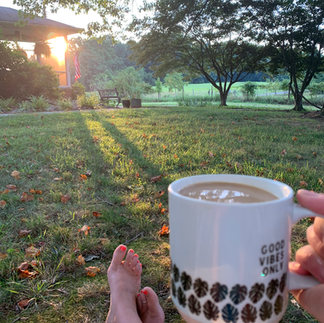















































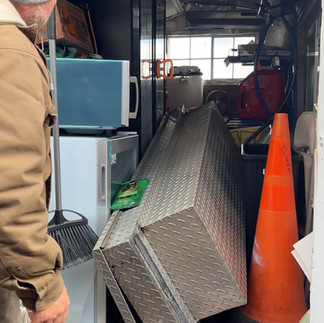

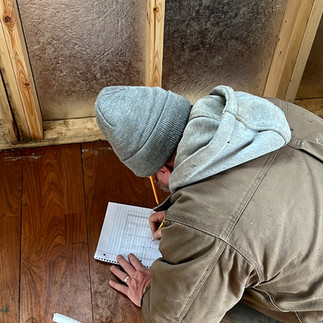





















































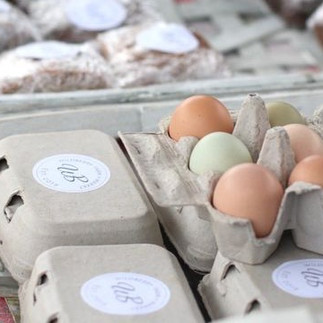



















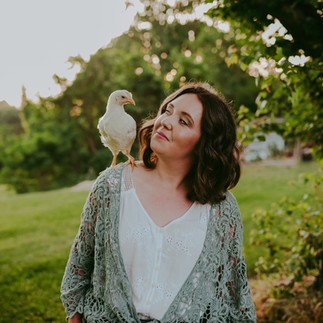























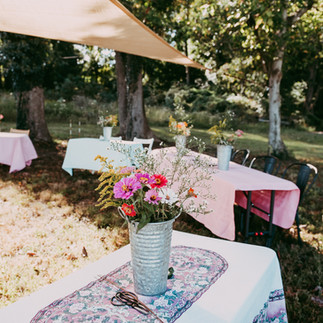





































































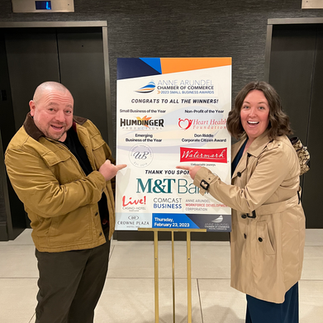

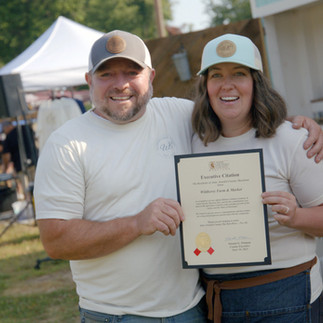























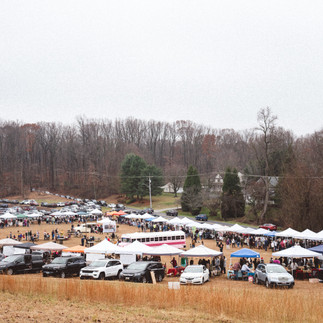

























Comments